Froth, Foam and Bubble....
The 1997/8 Expeditions
The Time: July 1997 and July-August 1998
The Place: Trinidad - based in St.Augustine, with fieldwork in the Northern Range, Caura, Lopinot and Arima valleys, Caroni swamp, Piarco, Matura & Maracas beaches...
The Team: Malcolm Kennedy, Alan Cooper, Tennie Videler (1997), Emma Wilson (1998) - with guest appearances from Clive Banks (retired engineer and frogman extraordinaire), Andrew Gray (herpetologist, Manchester Museum), who were just visiting, and Simeon Williams ("Patsy"), local expert on all aspects of Trinidad wildlife (especially frogs).
Some pictures to be going on with....
Five go mad on El Tucuche (3071ft - home of the golden tree frog): Clive, Malcolm, Andy, Alan and Patsy at the summit...
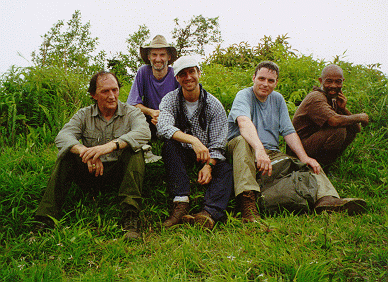
"Chicken shack pool", Lopinot valley road - a potent source of frogs and other exotica.
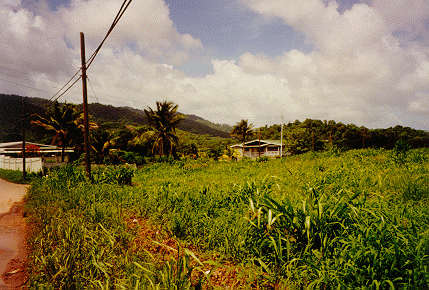
Malcolm, in Lopinot graveyard, pretending to find nests of the burrowing frog (Leptodactylus fuscus). Final score:- Tennie+Alan: 6 Malcolm: 0 (but we couldn't have done it without his expert tuition !) These frogs burrow close to pools and make foam nests in small chambers in the mud, 1-2 inches below the surface. Tadpoles develop in the foam and emerge ~7 days later. The best(?) technique for finding nests is to probe the ground, inch-by-inch with a spoon, carefully avoiding water-buffalo-pats and other delights.
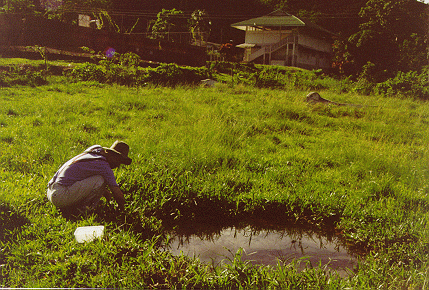
Foam nest of Physalaemus pustulosus in a typical habitat - a stagnant roadside puddle. These are abundant, easy to find (even Malcolm can find them), and provide our main source of foam material.
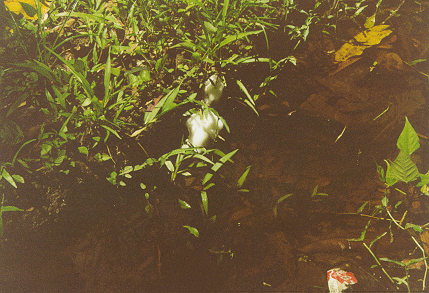
An alternative strategy developed by some tree frogs is to construct their nest in vegetation overhanging an appropriate pool, into which tadpoles may fall (or crawl) when the time is right. The Phyllomedusa trinitatis nest seen here at the Simla field station is made by folding over a large leaf, sealed top and bottom with a jelly capsule plug, to protect the eggs and jelly capsules embedded within.
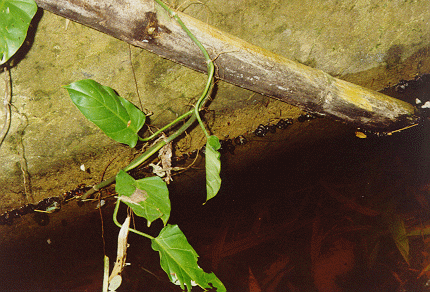
Habitat shot - near Simla field station
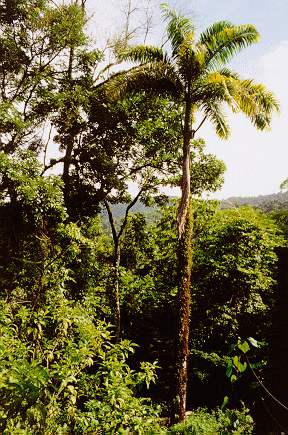
Habitat shot - Lopinot valley.
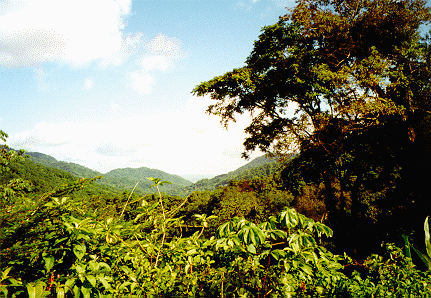
Habitat shot - Piarco plain, with Northern Range in background.
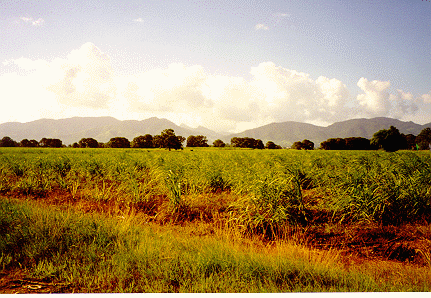
Habitat shot
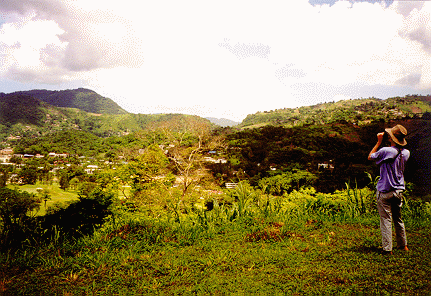
Habitat shot - Maracas Bay.
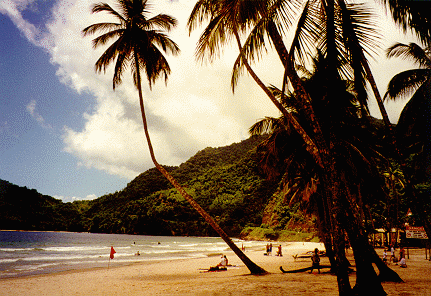
Habitat shot - Maracas Bay (yes, we did spend one afternoon on the beach).
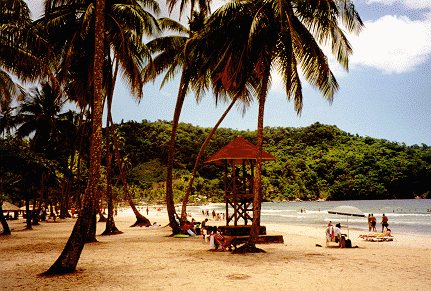
Habitat shot - Trinidad rainforest track.
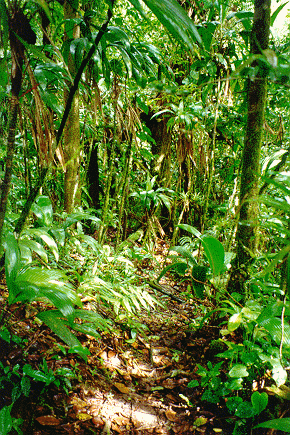
Bromeliads on El Tucuche. The golden tree frog (Phyllodytes auratus - found only here) raises its tadpoles in pools of rainwater trapped in these large epiphytes
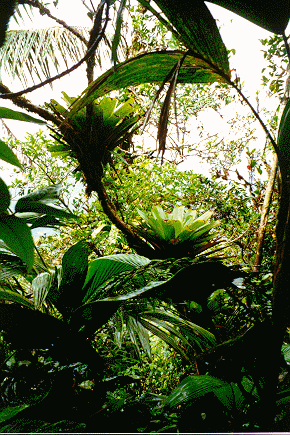
Patsy finds a golden tree frog. ("Brilliant!" - says Clive. "Dead brilliant!" - says Andy.)
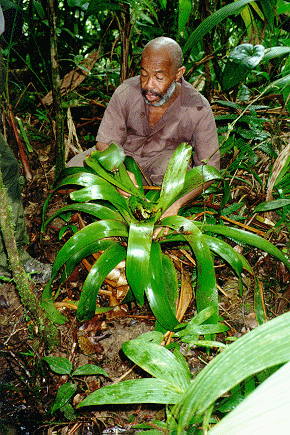
Now the science bit...
P.pustulosus will do it anywhere, even in the lab. This pair (male centre left, female hiding behind the nest) were caught in amplexus (thanks Andy!) and produced the small foam nest overnight in the aquarium tank.
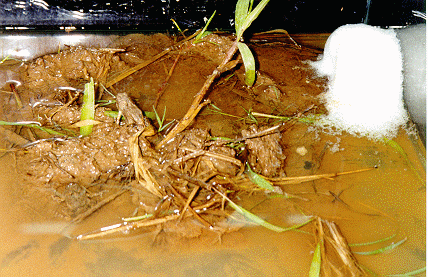
P.pustulosus nest collected in the field, prior to processing to remove eggs (this involved gentle centrifugation, collection of supernatant fluid, and hand separation of remaining eggs from the foam).
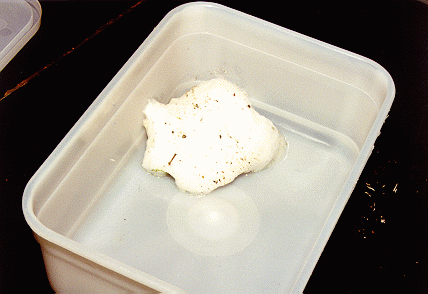
Foam nests will develop quite happily in the lab...
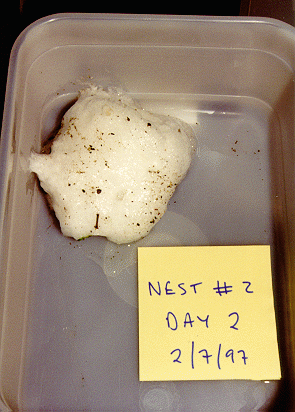
Eggs are almost fully developed into tadpoles by Day 3...
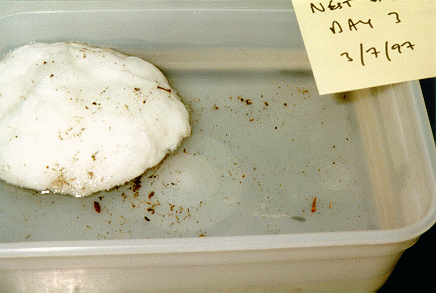
... and tadpoles begin emerging into water at the bottom of the nest by Day 4.
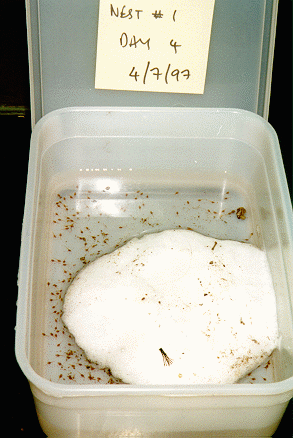
Tadpoles are fully developed and out of the nest by Day 6...
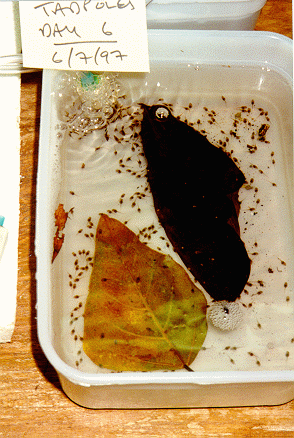
... leaving behind the residual foam nest.
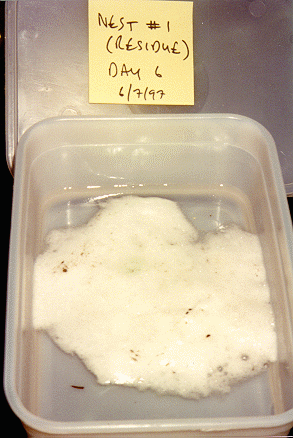
One that didn't get away - L.fuscus metamorph, in the lab.
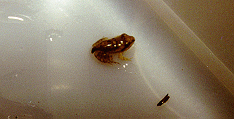
For the 1998 expedition, Malcolm, Alan and Emma were far too busy working in the lab to take pictures....
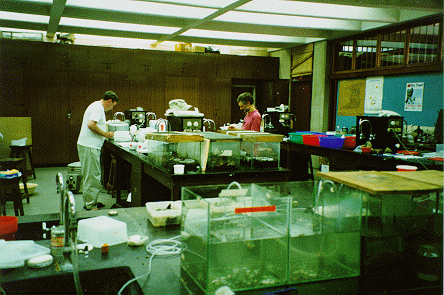
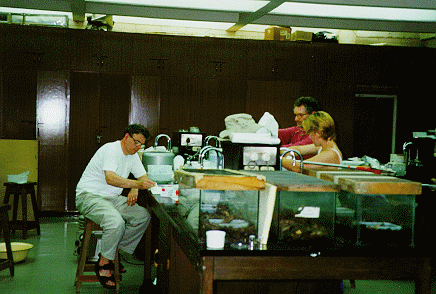
*
Acknowledgements: Thanks to Prof. Peter Bacon, Eunice Ifill and other members of the Zoology Department, UWI, for help and hospitality; to Roger Downie (Glasgow) and Simeon Williams (Trinidad) for expert guidance; to David Boodoo, David Persaud and staff of the Trinidad Wildlife & Forestry Service for help with collection and export licenses; to Gerard and Oda Ramsawak (Pax Guest House) for accommodation and perseverance; to The Wellcome Trust for financial support.
Malcolm Kennedy
Alan Cooper
Tennie Videler
Emma Wilson
Return to Biophysical Chemistry home page.























